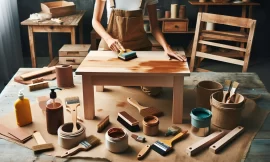In the realm of gardening, space constraints need not be a hindrance to your green thumb ambitions. Container gardening opens up a world of possibilities, allowing you to cultivate a vibrant oasis of greenery and blooms even in the most confined of spaces. Whether you have a balcony, patio, or sunny windowsill, you can embark on a rewarding journey of nurturing plants with this versatile gardening approach. Here’s a step-by-step guide to help you get started on your own container garden adventure.
Materials You’ll Need
Before you dive into the soil, gather the essentials:
- Containers: Pots, planters, window boxes—choose containers that suit your space and aesthetic preferences. Ensure they have drainage holes to prevent waterlogging.
- Potting soil: Opt for high-quality potting soil that provides good drainage and aeration for your plants.
- Plants or seeds: Select plants suited for container gardening, including flowers, herbs, and vegetables. Consider the amount of sunlight your space receives when choosing your plants.
- Watering can or hose: Essential for keeping your plants hydrated.
- Fertilizer: Provide your plants with extra nutrients as needed to support healthy growth.
- Optional: Stakes or trellises: Offer support for climbing plants or those with sprawling growth habits.
Choosing Your Containers
Select containers that not only fit your space but also complement the overall aesthetic of your garden. Consider the size of your plants and ensure the containers are spacious enough to accommodate their root systems.
Selecting Plants
Choose plants that thrive in container environments and are suitable for the amount of sunlight your space receives. Whether you opt for colorful flowers, aromatic herbs, or fresh vegetables, select varieties that will flourish in your specific growing conditions.
Preparing Your Containers
Before planting, fill your containers with potting soil, ensuring they are adequately filled but not overly compacted. Good-quality potting soil provides the necessary nutrients and drainage for healthy plant growth.
Planting
When planting your seeds or seedlings, follow specific planting instructions for each type of plant. Space them according to their growth needs, ensuring they have ample room to spread their roots and thrive.
Watering and Feeding
Keep your plants well-hydrated by watering them regularly, being careful not to let the soil become waterlogged. Monitor the moisture levels closely, especially during hot and dry periods.
Fertilize your plants as needed to provide them with additional nutrients for optimal growth and development.
Maintaining Your Garden
Regular maintenance is key to keeping your container garden thriving:
- Check your plants regularly for pests or diseases, addressing any issues promptly to prevent spread.
- Deadhead flowers and prune plants as necessary to encourage new growth and maintain their shape and appearance.
Enjoying Your Garden
Sit back, relax, and bask in the beauty and bounty of your container garden. Whether you’re harvesting fresh herbs and vegetables for culinary delights or simply admiring the colorful blooms, take pleasure in the fruits of your labor and the tranquility your garden brings to your living space.
In conclusion, creating a container garden is a simple yet fulfilling way to embrace gardening, even in the most spatially challenged environments. With a bit of creativity and care, you can transform any small space into a flourishing oasis of greenery and life. So roll up your sleeves, gather your materials, and embark on your container gardening journey today!



